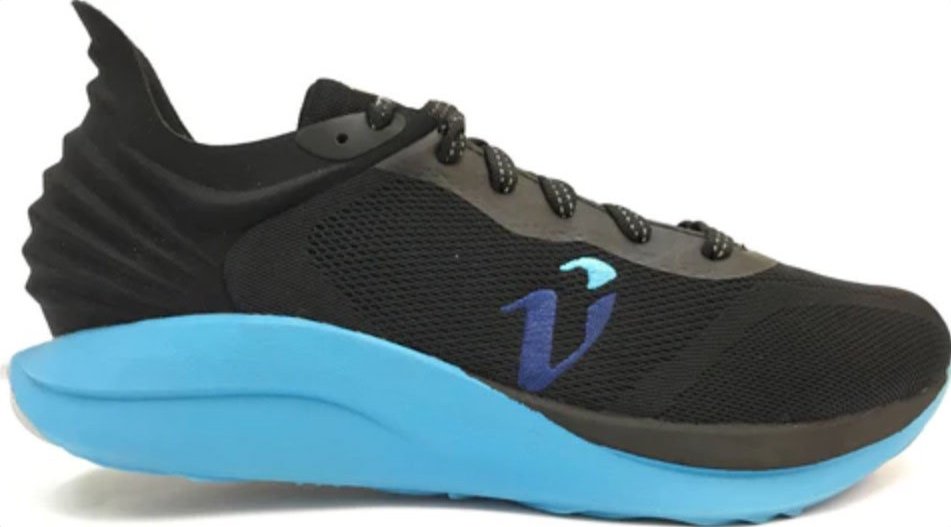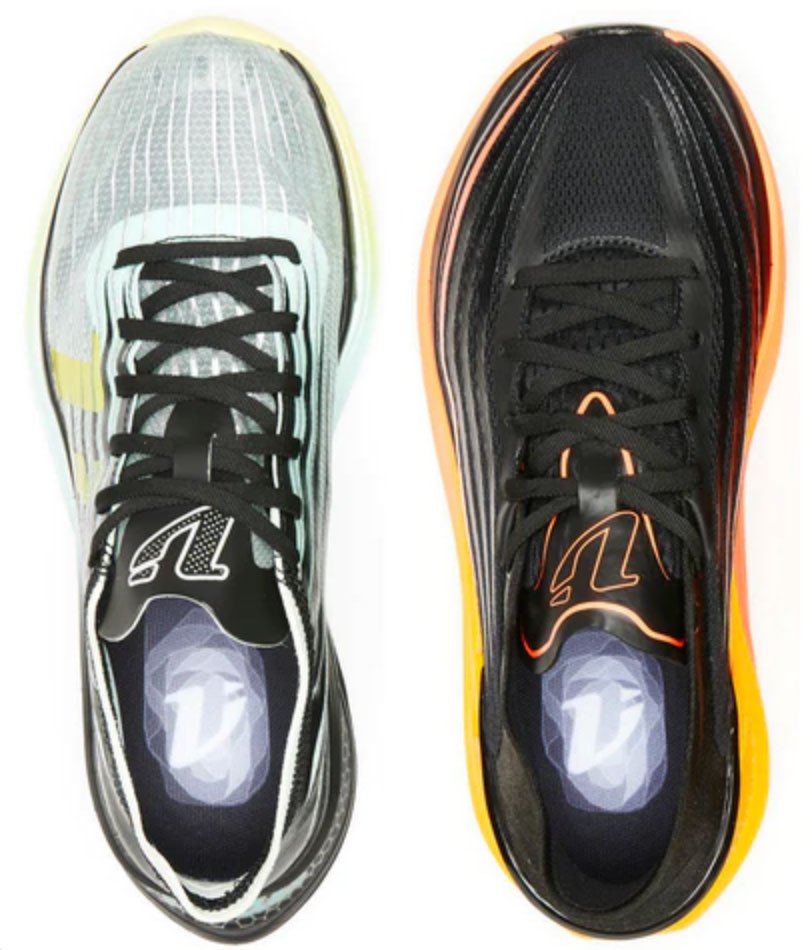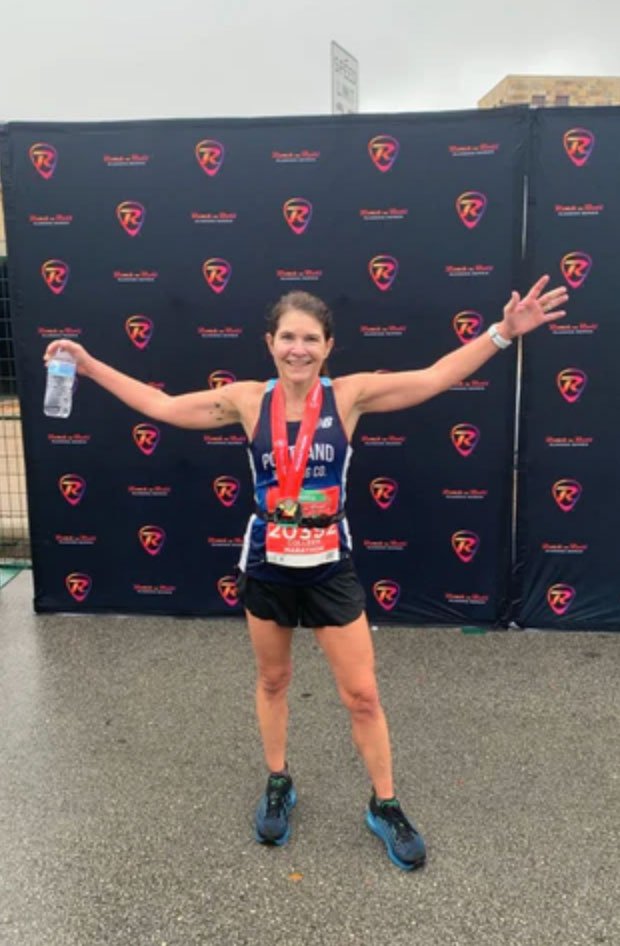The long journey, mathematical and otherwise, to pace-tuned shoes
In 2017, around the time that Nike was working on their Breaking-2 project, I was struck by an early morning thought while jogging to the track to meet my interval workout group. It was 5am on a dark, drizzly Tuesday morning, if you really want to know.
The thought hit me like this: I bet I could design a running shoe that did a better job of returning energy if I engineered the midsole to respond to the forces placed on it while running. Let’s get more specific. Assuming the forces are greater when running faster, a series of shoes could be engineered to respond to the range of forces from fast running to easy jogging. That was how the first idea for pace-tuned running shoes began. Little did I know, I had a long, long ways to go.
Just a brief aside, in an otherwise very long post, to say that I’m a lifelong runner and I’ve spent my career making footwear for runners. Only to say that thinking about making shoes wasn’t a random Tuesday morning thing.
It requires formulas when you want to engineer something precisely. I figured I’d just look up the formulas and they’d tell me how to engineer a series of pace-tuned shoes. But no formulas existed. Sure, there were bits and pieces that sounded promising, but ultimately there was nothing that would help engineer an actual product. So I decided I would have to figure it out myself (I’m persistent like that).
Like everybody else in the world, I assumed that running incorporated spring-like motions. And if springs were involved, then maybe there would be a harmonic resonance associated with particular stride lengths and cadences (i.e. paces). If you could engineer a shoe to match a resonance frequency, then you could get much more energy return. This is the basic idea I started with. But here’s what I didn’t yet know. It was completely wrong.
Meanwhile, I started working with my high school running friend John to come up with the best way to tell our “resonance frequency means more energy return with pace tuned shoes” story. The story improved and the partnership clicked, so John and I decided to start Vimazi. After incorporating, we rallied a few friends and family members to invest in the company as we pursued the idea.
At the same time, I worked on getting the formulas to do the engineering so I could build a prototype shoe and test it. I read every research paper and book on the subject. I then started working out the math and physics. But there was a big problem: When I used real numbers as inputs (there are lots of force measurements published, plus I had some of my own data that matched what was published), I couldn't get a result that made any sense. What I mean is that the properties of a spring in a shoe didn't result in anything that looked like the running measurements that anyone had made. My numbers for resonance were off by a factor of 5. That's a gigantic discrepancy, and it was a low moment for me. Either I didn't know how to do the simple math for damped harmonic motion (which anyone can lookup online), or I was barking up the wrong tree. Hand on forehead! How do I break the news to John?
Back to the drawing board. If it isn't harmonic motion, (that’s what you get when you bounce on a spring) then what’s going on? We aren’t talking about what happens inside the body, we’re talking about a shoe made of a simple bouncy material. If energy return is equal to harmonic motion, and if harmonic motion doesn't result in anything close to real-world measurements, then what is energy return?
Another thought struck, and it struck hard. Maybe there’s no such thing as energy return. Maybe there is just shock absorption and propulsion. And if so, is pace tuning still valuable in any way?
Yes it is!
If the shock of impact increases with pace and the force of propulsion increases with pace, then it’s possible to engineer pace-tuned shoes to both absorb shock and to not waste energy during push off. In fact, I’d discovered something more valuable to a runner than energy return: Maximum cushioning with more efficient propulsion can be achieved through pace tuning.
When John and I first started discussing the core principals that would animate our brand—principles we wanted to live by—he guided us through something he helped invent called Brand Gravity. During the process we found that our guiding light, our Polaris, would be to pursue the truth. Ditching the ideas of resonance and springs resulted from pursuing the truth. (To be honest, it took me a couple years for this to fully sink in.)
However, I still needed formulas to engineer pace-tuned shoes, and so far all I’d accomplished was to rule out resonance and springs. Perhaps collecting data on forces by pace would help guide me to the formulas we needed.
With a well designed experiment, I could control the confounding variables and get formulas that told me how the forces will change by pace. I could then calculate the foam densities needed to maximize cushioning and propulsion efficiency. We conducted an experiment and collected the data. I also filed a patent application for the invention of tuning a midsole by pace.
The data got me the formulas I was looking for. But the data suggested that there was something more going on in running than just how a shoe compresses. Something fundamental. The data were so consistent, the correlations were so strong, that I thought there must be something physical, something mathematical going on. But what? And who cares? After all, I had my engineering formulas, along with working prototypes, a filed patent, and incorporation. We’d also raised more money from investors and registered brand name and logo. Why not just focus on getting through Covid and getting our shoe designs developed?
Truth. I wanted to pursue the truth and know what was going on at a deeper level. I also wanted proof, mathematical proof, that springs were not part of the running motion so that I could better explain it to the curious, the skeptical and, most importantly, runners who might want to buy our shoes.
A very early prototype
Speaking of Covid, we had countless delays in designing, prototyping, and commercializing our first six models. You’ve heard all about the supply chain slowdowns, and we suffered from that for sure. It didn’t help that we were tiny and unproven, and couldn’t visit our suppliers and manufacturing partners in China.
As the delays extended, we needed something to focus on so we spent our time writing and publishing an interval training book, Running in Circles. We also built a unique training plan app called RunCrush, which was well-received on launch though we’ve had to back-burner it for the moment as we focus our efforts and watch our bank account.
Meanwhile, the rest of the running world has been convinced that ultra thick shoes with bouncy foam and carbon plates make you run faster. Some even say it’s a form of cheating. And where's the proof? Look at all the records falling and the millions of people buying the so-called supershoes. (We won’t digress into a discussion of recency bias here.) How can you argue against all that?
Except that I figured out the math for running. It's built on theorems that have proofs, so we can check to be sure the physics is correct. When we plugged the numbers into our formulas, the results matched the measurements exactly. In other words, the math says we use pressure feedback from each step to stay upright and to control our direction and speed. We run by actually feeling our way.
If you like math, we can have a long, long talk sometime. (I love this stuff!) But if you don't like math, just know that it results in the exact same engineered foam densities I came up with from the experimental data. The math provides the mathematical proof that running shoes, and the human body run by feel and that springs are not part of the equation. A rabbit hole, I know. But I said, I’m persistent and we’re pursuing the truth.
Turns out that we needed persistence in spades as the engineering, design, and commercialization took longer and longer and longer. Most foam suppliers, for instance, won’t create midsoles to precise durometers and be willing to share test results that prove it.
Additionally, as lifelong runners and marathoners, we knew that the way a running shoe fits is king, and queen too. No one will care about our pace-tuned tech if the shoes don’t fit perfectly, and that took a whole lot of back and forth. What’s more, most manufacturers aren’t used to making a series of shoes that all fit exactly the same. We know that some runners will want to run in multiple Vimazi models, so a women’s size 8.5 better fit the same in the Z30 as the Z50 and Z60. We’ve made sure they do, even though that led to further delays.
The Z30 and Z60 fit the same basic sole
Every iteration along the way needed to be carefully tested. We spent a lot of time running on each model, and fine-tuning the fit, feel, and ride. Eyelets, heel components, toe design, laces, midsole finishing and much more had to be reevaluated numerous times. By the end, the shoes have been tested in the Boston, London, Portland, and San Antonio Marathons, as well as in countless smaller races and training runs at all paces.
Successful San Antonio Marathon in the Z50s
Finally, after almost five years, the world’s first pace-tuned shoes have been completed and are on the way to our warehouse near Detroit. Woof! As we wait for them to arrive, John and I are looking at each other wondering what the next leg of the run is going to look like. We can’t wait.
More About Vimazi
Here’s what Vimazi does
We make pace-tuned running shoes that provide better cushioning and more efficiency than previous generations of running shoes.
The physics of pace-tuned shoes
Back in 2017, while Vimazi CEO Scott Tucker was running to his 6am interval workout, he had an idea. A shoe made for a specific pace, he thought, might offer better cushioning and more propulsive efficiency than a generic shoe that wasn’t “tuned” for a particular pace.
It took three years to fully understand the physics of human running, and the forces that are generated. When we finally understood the physics, we built an equation that defines running forces. We’re now able to calculate the exact impact force and propulsion force, in Newtons, for any pace, including variations for height, weight, and cadence. (A Newton is a metric unit of force.) Data from the Forces in Running study we conducted aligned with the force calculations we got from the physics. In other words, we know it works.
Knowing the precise impact and propulsion forces at each pace, allowed us to create shoe models for different pace zones. So our pace-tuned technology is based on pure physics. No hand waving, no conjecture, no correlative studies, no self-reported data sets, no marketing fluff. We started with the physics of human running, and it led us to pace-tuned shoes.
The problem with previous gen running shoes
Most running shoes have the same foam density from heel to toe, and they’re sold to runners of every pace. The trouble is that midsole foam can’t respond correctly to the forces at all paces, and it can’t even respond appropriately to the differences between impact and propulsion forces. To make sure you get all the cushioning you want as well as all the efficiency you deserve, you need a shoe that’s made for a specific pace zone and tuned differently in the heel than the forefoot.
The Vimazi solution
Our solution to this running shoe problem was to create something that's never been done before—pace-tuned running shoes. In 2023, after years of testing, we launched seven road shoe models that span paces from 4:30 minutes per mile to 15 minutes per mile (2:50-9:30 minutes per kilometer). By making a shoe for a specific pace zone, we’ve been able to deliver better impact cushioning and propulsion efficiency for every runner.
25 years experience
We’ve taken everything we learned making running shoes for 25 years—and running marathons for even longer—and elevated it to a whole new level with pace tuning. It offers a better and more personal running experience. We were instrumental in creating shoes for Montrail, Scott Sports, and Pearl Izumi. We learned even more while owning a specialty running store and organizing running events.
A marathoner’s fit
Running shoes can have the best tech, but if they don’t fit well, nobody will wear them. We wouldn’t either! Not only have we spent our careers perfecting innovative fit technologies at other companies, notably at Montrail, we’re also life-long marathon runners ourselves. So we understand fit and know how critical it is, from heel to toe. Each of our models has been painstakingly designed and built with the perfect fit in mind. They’ve also been extensively road tested since 2019, including at the Boston, London, Portland, Missoula, San Antonio, and Two Oceans Marathons. We think you’ll love them.



